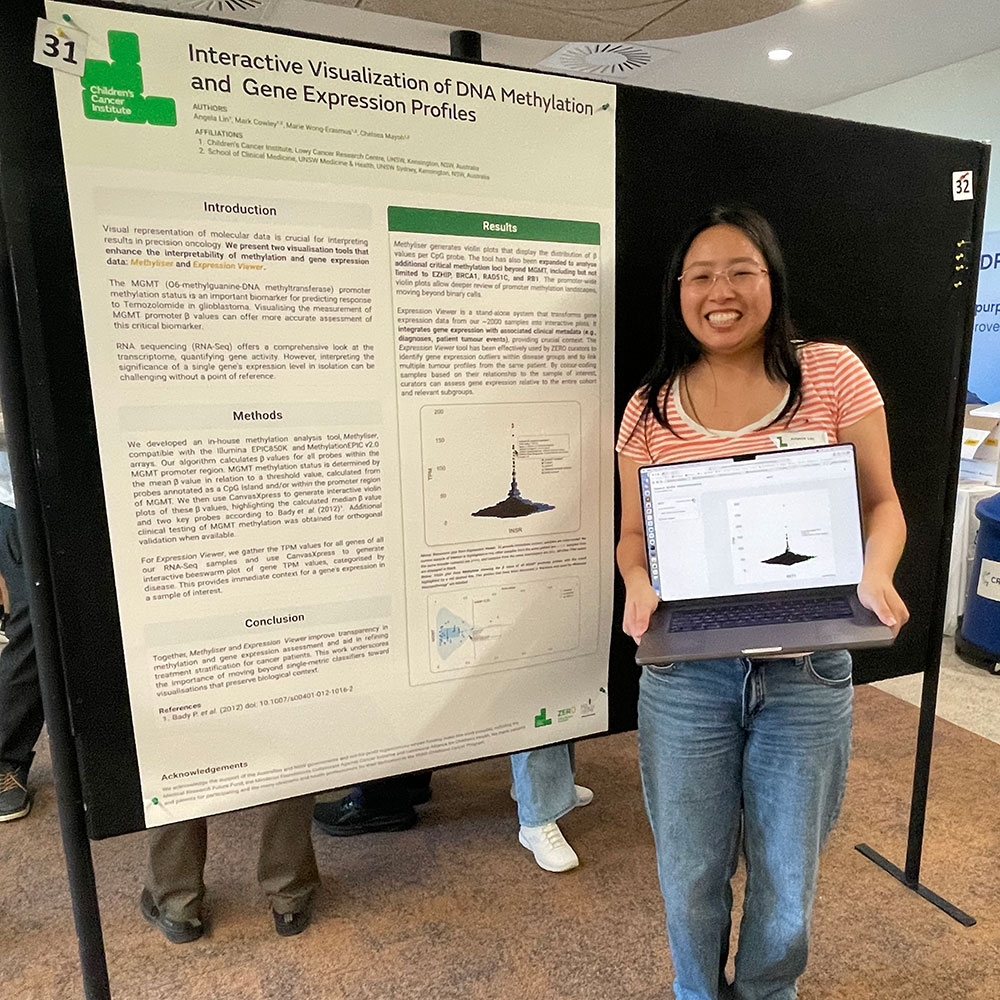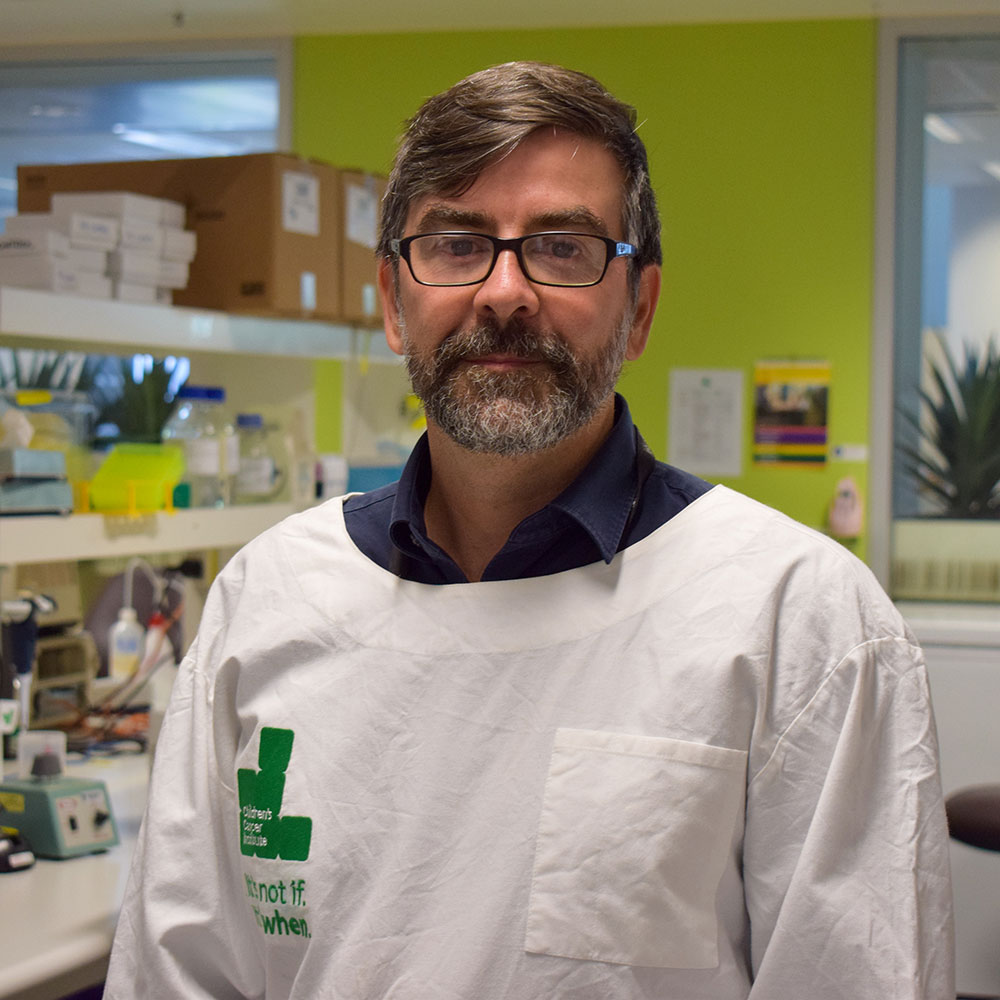The possibility of a whole new approach to treating the childhood cancer, neuroblastoma — and potentially a number of other cancers as well, both in children and adults — has opened up following the results of an Australian study published today in the international journal, Nature Communications.
Led by researchers at Children’s Cancer Institute, the study found for the first time that a gene known as RUNX1T1 is essential for the development of neuroblastoma. Excitingly, ‘knocking out’ or silencing this gene completely prevented the development of tumours in mice bred to develop neuroblastoma, and strongly inhibited the growth of human neuroblastoma cells in culture.
The research also provided new evidence that the RUNX1T1 gene plays an important role in adult small cell lung cancer and rhabdomyosarcoma, two other cancers that display high levels of RUNX1T1 compared to other tumour types.
Professor Murray Norris AM, senior author on the paper, described the results as “a major finding” which had taken many years of research to uncover. “This work opens up entirely unexplored avenues for the development of new therapeutic approaches for neuroblastoma, and quite possibly other cancers as well.”
Neuroblastoma is responsible for the deaths of more Australian children under the age of five than any other cancer. Often well advanced by the time of diagnosis, it is particularly life-threatening in children whose tumours show high levels of an oncogene called MYCN. For this reason, scientists have tried for many years to find a way to target the MYCN gene, and other genes it controls, without success.
Now, researchers appear to have found a new way to target this cancer, by focusing on a different gene — RUNX1T1. According to lead author on the study, Dr Jayne Murray, it was approaching the challenge from a fresh angle that led to the breakthrough.
“RUNX1T1 has never previously been shown to have any role to play in any paediatric solid tumour and would probably not have been discovered if we hadn’t tried something altogether different in the lab,” she said.
In an exciting twist, the researchers found that silencing RUNX1T1 not only inhibits the growth of neuroblastoma cells, but also appears to make these cancer cells more visible to the body’s immune system. This is significant because in children with solid tumours such as neuroblastoma, tumour cells are able to evade the immune system by effectively making themselves undetectable, severely hampering attempts to use immunotherapy as a treatment strategy.
“This unexpected effect of RUNX1T1 is something we are now investigating further in our lab, as it could prove to be a major breakthrough in the treatment of not just neuroblastoma, but a whole range of childhood cancers,” said Professor Norris.
Collaborators on the study included scientists from the University of Bologna, University of Amsterdam, Walter and Eliza Hall Institute of Medical Research, Prince of Wales Hospital, UNSW Sydney, Monash University, University of Sydney, and Kids Cancer Centre at Sydney Children's Hospital.
This research has been generously supported by The Profield Foundation Trust, Tour de Cure Australia, Cancer Council NSW, and Neuroblastoma Australia.
Full manuscript online at https://www.nature.com/articles/s41467-024-49871-0
Media contact
0408 378 422
About Children’s Cancer Institute
Originally founded by two fathers of children with cancer in 1976, Children’s Cancer Institute is the only independent medical research institute in Australia wholly dedicated to research into the causes, prevention and cure of childhood cancer. More than 40 years on, our vision remains to save the lives of all children with cancer and improve their long-term health, through research. The Institute has grown to now employ over 350 researchers, operational staff and students, and has established a national and international reputation for scientific excellence. Our focus is on translational research, and we have an integrated team of laboratory researchers and clinician scientists who work together in partnership to discover new treatments which can be progressed from the lab bench to the beds of children on wards in hospitals as quickly as possible. By developing safer and more effective drugs and drug combinations, we aim to minimise side effects, giving children with cancer the best chance of cure with the highest possible quality of life. More at ccia.org.au
About Tour de Cure Australia
Tour de Cure Australia is a not for profit focused on raising funds to support cancer research, treatment and prevention. They organise cycle, walk, run, and gala events across Australia with over 150 partners and sponsors who actively participate in their mission: Curing Cancer, Changing Lives.
Since 2007 Australians has supported us in raising more than $130 million, to fund 1019 cancer projects. These projects have led to 156 major cancer research breakthroughs, increasing our understanding of the causes of cancer and supporting patients and families as they face a cancer diagnosis. More at Tourdecure.com.au
About Cancer Council
We are Australia’s leading cancer charity uniting the community, providing support, investing in research and saving lives. It takes many hands to take on cancer, but with the help of all of us, we’re getting closer to a cancer free future.
For more information about Cancer Council, visit cancercouncil.com.au or call Cancer Council’s 13 11 20 Cancer Information and Support line, a confidential service for anyone with questions about cancer.?
About Neuroblastoma Australia
Neuroblastoma Australia is a registered childhood cancer charity focused primarily on raising funds to improve the survival rates of neuroblastoma. Children diagnosed with neuroblastoma are on average just 2 years old. They don’t have a voice and it is so important they have one and don’t have to endure this disease in silence. Neuroblastoma Australia would welcome your support to help us ensure that every child does get the chance to grow up that they so deserve. More at neuroblastoma.org.au













